|

|
HALLOWEEN
Halloween’s origins date back to the ancient Celtic festival of Samhain (pronounced sow-in). The Celts, who lived 2,000 years ago in the area that is now Ireland, the United Kingdom, and northern France, celebrated their new year on November 1. This day marked the end of summer and the harvest and the beginning of the dark, cold winter, a time of year that was often associated with human death. Celts believed that on the night before the new year, the boundary between the worlds of the living and the dead became blurred.
|
On the night of October 31, they celebrated Samhain, when it was believed that the ghosts of the dead returned to earth. In addition to causing trouble and damaging crops, Celts thought that the presence of the otherworldly spirits made it easier for the Druids, or Celtic priests, to make predictions about the future. For a people entirely dependent on the volatile natural world, these prophecies were an important source of comfort and direction during the long, dark winter.
To commemorate the event, Druids built huge sacred bonfires, where the people gathered to burn crops and animals as sacrifices to the Celtic deities. During the celebration, the Celts wore costumes, typically consisting of animal heads and skins, and attempted to tell each other’s fortunes. When the celebration was over, they re-lit their hearth fires, which they had extinguished earlier that evening, from the sacred bonfire to help protect them during the coming winter. By A.D. 43, Romans had conquered the majority of Celtic territory. In the course of the four hundred years that they ruled the Celtic lands, two festivals of Roman origin were combined with the traditional Celtic celebration of Samhain. The first was Feralia, a day in late October when the Romans traditionally commemorated the passing of the dead. The second was a day to honor Pomona, the Roman goddess of fruit and trees. The symbol of Pomona is the apple and the incorporation of this celebration into Samhain probably explains the tradition of "bobbing" for apples that is practiced today on Halloween. By the 800s, the influence of Christianity had spread into Celtic lands. In the seventh century, Pope Boniface IV designated November 1 All Saints’ Day, a time to honor saints and martyrs. It is widely believed today that the pope was attempting to replace the Celtic festival of the dead with a related, but church-sanctioned holiday. The celebration was also called All-hallows or All-hallowmas (from Middle English Alholowmesse meaning All Saints’ Day) and the night before it, the night of Samhain, began to be called All-hallows Eve and, eventually, Halloween. Even later, in A.D. 1000, the church would make November 2 All Souls’ Day, a day to honor the dead. It was celebrated similarly to Samhain, with big bonfires, parades, and dressing up in costumes as saints, angels, and devils. Together, the three celebrations, the eve of All Saints’, All Saints’, and All Souls’, were called Hallowmas.
|
all hallows
ancient
blurred
bonfire
boundary
Celtic
Church-sanctioned
comfort
crops
deity
entirely
freehand
goddess
harvest
hole
human
in addition to something
it is widely believed
jagged
molasses
natural world
otherworldly spirits
presence of something
prophecy
remaining
sacrifice
skin
source of somthing
stem
the majority of something
to attemp to do something
to avoid something
to be associated with
to be dependent on something
to believe
to cause trouble
to celebrate
to commemorate something
to conquer
to consist of something
to date back
to decorate
to designate
to dress up
to extinguish
to gather
to make predictions about the future
to mark
to press out the air
to re-lit
to replace
to seal
to set aside
|
Mindenszentek
ókori
elmosódott
máglya
határvonal
kelta
egyház által szentesített
vígasz
termés
istenség
habos, bolyhos
szabadkézzel
istennő
aratás
lyuk
emberi
valamin felül
széles körben hitt
fűrészfogú
melasz
természeti virág
túlvilági szellemek
valami jelenléte
prófécia
megmaradó
áldozat
bőr
valami forrása
szár (növény)
vminek a nagyrésze
megkísérel valamit csinálni
kihagy valamit
valamivel
függeni valamitől
hinni
bajt okozni
ünnepelni
megemlékezni valamiről
meghódítani
állni valamiből
valahonnan ered
díszíteni
kinevezni
beöltözni
eloltani
összegyűlni
jósolni a jövőre vonatkozólag
megjelölni
kipréselni a levegőt
újragyújtani
áthelyez
lezár
félretesz
|
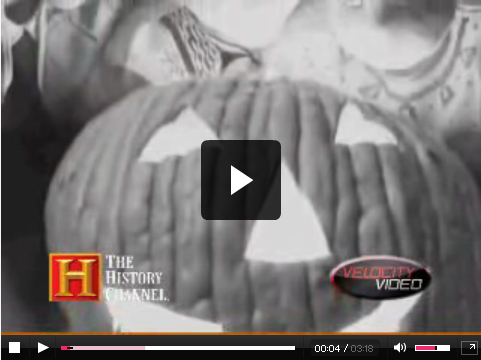
|
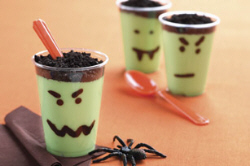
|
SCARY PUDDING CUPS
Prep. Time:
10 min
Total Time:
1 hr 10 min
Makes:
4 servings
|
|
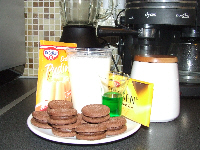
|
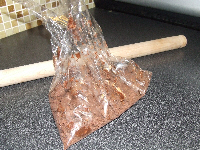
|
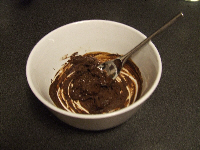
|
|
What you need: 1 pkg. (4-serving size) Dr Oetker Vanilla or Cream Flavor Pudding, a couple of sqaures of semi-seet chocolate, 6 drops of green food coloring, chocolate cookies or biscuits, crushed, half a litre of milk, 3-5 tbs. of sugar.
|
Place the cookies in a plastic bag and crush them with a rolling pin.
|
Melt chocolate in microwave as directed on package.
|
|

|
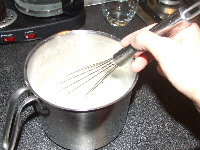
|
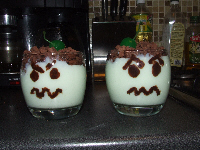
|
|
Use a clean small paint brush to paint a monster face on the inside of each of four clear 5-oz. plastic cups with the melted chocolate. Refrigerate until ready to use.
|
Add milk and food coloring to dry pudding mix in medium bowl. Beat with wire whisk 2 min. or until well blended. Immediately pour into prepared cups.
|
Top with the cookie crumbs. Refrigerate at least 1 hour before serving. Store any leftover desserts in refrigerator.
|
Kitchen Tips:
Variation – Jack-O’-Lantern Cups
Prepare as directed, except paint jack-o’-lantern faces inside the cups and substitute 2 drops red food coloring and 4 drops yellow food coloring for the green food coloring. Insert a pretzel log into top of each filled pudding cup for the pumpkin stem.
Nutrition Infomation
Calories 290, Total fat 9 g, Saturated fat 4.5 g, Cholesterol 10 mg, Sodium 520 mg, Carbohydrate 49 g, Dietary fiber 1 g, Sugars 36 g, Protein 5 g, Vitamin A 4% DV, Vitamin c 0% DV, Calcium 15% DV, Iron 8% DV
source: www.kraftfoods.com
|
|

